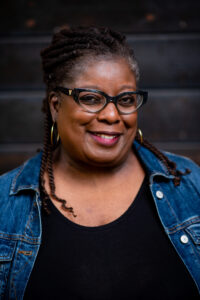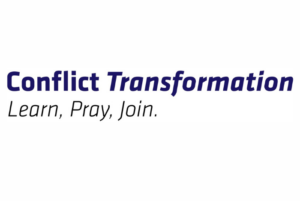Sheryl Wilson gives advice on how bystanders can better assess a situation in which they witness harm done to others, so they know how to step up without overstepping.
This blog is part of the ongoing Learn, Pray, Join: Climate Justice: Conflict Transformation series.

Photo by Brooke Anderson
Sheryl R. Wilson, M.L.S., is the vice president of culture and belonging at Bethel (Kansas) College and has been a practitioner, trainer and educator in restorative justice and mediation for over 20 years, working with individuals, non-profits, academic institutions and public agencies from around the world.
_________________________________________________
“Each of you should use whatever gift you have received to serve others, as faithful stewards of God’s grace in its various forms.” — 1 Peter 4:10 (NIV)
Having been a practitioner of restorative justice for many years, I have had the honor and privilege to work with people who have been on all sides of harm. I have been a listening ear to those who have been the victim of wrongdoing and those who have experienced severe and violent harm. In addition, I have also worked with those who have committed harm, from those who have done a random and unintentional act, to those who had malicious intent and took a life. In the middle, are those who have been bystanders, witnesses and neighbors to those who have faced harm, committed harm or both. Of late, I have been writing about the role of these people that we call community members. How can they live into their roles with purpose?
When I served as the executive director of the Kansas Institute for Peace and Conflict Resolution (KIPCOR), I often worked as a third-party intervener in church conflicts. As I consider the role of bystanders or witnesses to harm in the church, I find that it is often difficult for bystanders to find their place outside of being directly involved, as a person who has been harmed or as a person who caused harm.
What happens when we witness harm and don’t know what to do, or whether we should get involved? How do we know what our roles are in the community? Often, when it comes to navigating relationships, it is hard to “know your lane.” Between “minding one’s business” and being “in someone’s business,” there is a spectrum. Somewhere in the middle of that spectrum is being a good neighbor.
I offer these questions to consider when it comes to reality-testing your community role:
- How do I identify the harm?
- How was I impacted?
- Who needs my support?
- How do I need to be supported?
1, How do I identify the harm?
Assessing harm can be easy when we witness it. On the other hand, harm can sometimes be harder to recognize. Maybe someone informs you about harm — this can be any type of harm, physical, systemic, etc. — or you learn about happenings in your neighborhood, or maybe you learn details of harm via social media. Regardless of how you learn about harm, there is the underlying question of whether or not to act. In assessing this, you might ask yourself a few other questions: Who else is seeing this? Are there other witnesses/bystanders? How can I contribute toward making the situation better?
2. How was I impacted?
How someone is personally impacted may not be a natural and immediate response for witnesses or bystanders of harm. Usually, this type of a response will focus on the person harmed or cause of the harm.
Today, we are more aware than ever of mental health issues and trauma, so the idea of paying attention to how one is feeling is not a foreign idea.
3. Who needs my support?
The choice of whom to support may be an obvious one, depending on your proximity to the subjects within the spectrum of harm. If you are closer to one particular side, then that would be where you would lend support. However, what happens when it is unclear which side to support?
If a person has to choose between those on both sides of harm, then it might require the person to assess where they are most needed. It also may require the opinion of another person to help us make such decisions.
4. How do I need to be supported?
Organized support for those who are caregivers is no longer unusual. There are several caregiver networks that provide resources and information on support groups. However, what happens when you are just trying to meet the needs of people overcoming their own trauma?
We have to be familiar enough with our own trauma and understand the types of circumstances that might trigger feelings that could render us ineffective. When we are uncertain about how well we can support others, we should access our personal support systems — therapists, close friends or colleagues — to get their opinion.
When we engage as a community, something happens, as we closely examine our relationships: We come to the realization that we are interconnected in ways that bind us culturally, relationally, vocationally, educationally and geographically. This “cross-pollination” of identities is common, as we peel back the layers and notice our relational connections. It is through this interconnectedness that we will hopefully be compelled to support those who need us in our church communities.

“Learn, Pray, Join: Conflict Transformation” provides tools and resources to help MC USA church communities peacefully engage in dialog around difficult and divisive topics. By embracing restorative justice and modeling healthy communication, we seek to witness to God’s peace, as we build diverse communities to serve and follow Jesus.
You are invited to get involved with Learn, Pray, Join: Climate Justice: Conflict Transformation.
Support Mennonite Church USA’s Peace and Justice Initiatives by giving here.
The views and opinions expressed in this blog belong to the author and are not intended to represent the views of the MC USA Executive Board or staff.
Interested in submitting a blog for Menno Snapshots? Please see our blog guidelines here.

